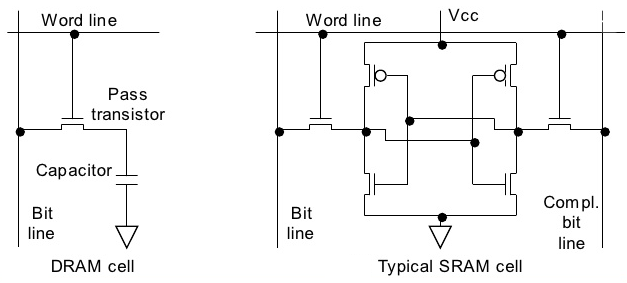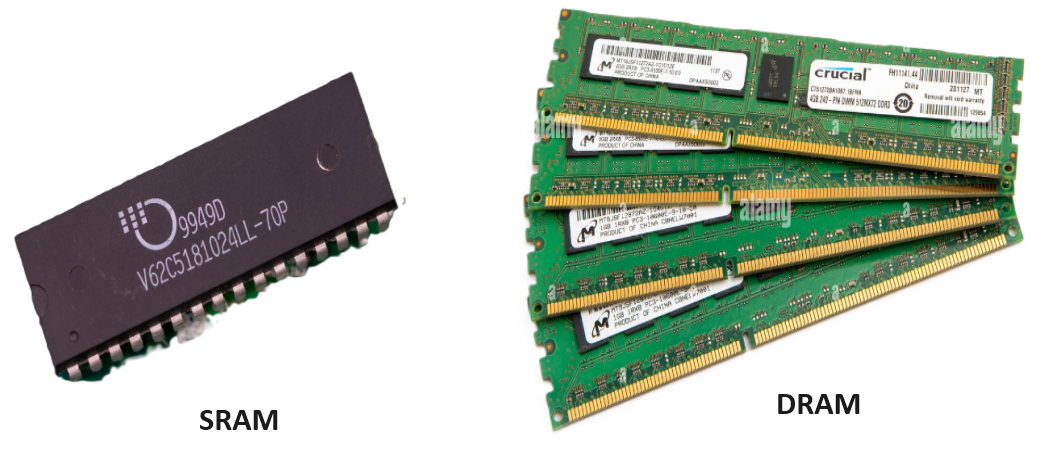SRAM (Static Random-Access Memory) and DRAM (Dynamic Random-Access Memory) are two common types of volatile computer memory used in electronic devices such as computers, smartphones, and other digital systems. They serve as the primary memory for storing and accessing data that the CPU (Central Processing Unit) uses during its operations, but they work differently and have distinct characteristics.
| SRAM | DRAM | |
| Cell Design | SRAM cells are typically made up of flip-flops, which are composed of multiple transistors (usually 6 transistors per cell). These transistors store the data as long as power is supplied to the chip. | DRAM cells consist of a single capacitor and a transistor. The capacitor stores the data in the form of an electrical charge. However, this charge gradually leaks away, so the data needs to be refreshed periodically. |
| Data Storage | SRAM is a static memory, meaning it retains its data as long as it is powered. There is no need to refresh or rewrite the data periodically. | DRAM is a dynamic memory because it requires refreshing to maintain data integrity. Each cell’s data is read and then written back to recharge the capacitor in a cycle called a refresh. |
| Speed | SRAM is faster than DRAM, as it can provide almost instantaneous access to data. It is often used for cache memory in modern computer systems because of its speed. | DRAM is slower than SRAM but is still fast enough for most applications. It is used as the main system memory in computers due to its capacity and lower cost. |
| Complexity | SRAM is a static memory, meaning it retains its data as long as it is powered. There is no need to refresh or rewrite the data periodically. | DRAM cells are simpler and smaller than SRAM cells, which makes them more cost-effective to manufacture and allows for higher memory density. |
| Capacity | SRAM is typically used for smaller amounts of memory, like cache memory, due to its cost and space requirements. | DRAM is suitable for larger memory capacities and is the primary choice for main memory (RAM) in most computing devices. |

Summary
SRAM is faster and doesn’t require periodic refresh cycles, making it ideal for small, high-speed caches in computer systems. DRAM, on the other hand, is slower but offers a higher memory capacity at a lower cost, making it suitable for main system memory. Both types have their strengths and are often used in tandem within a computer system to balance performance and capacity requirements.

